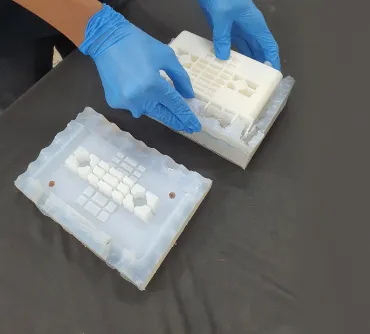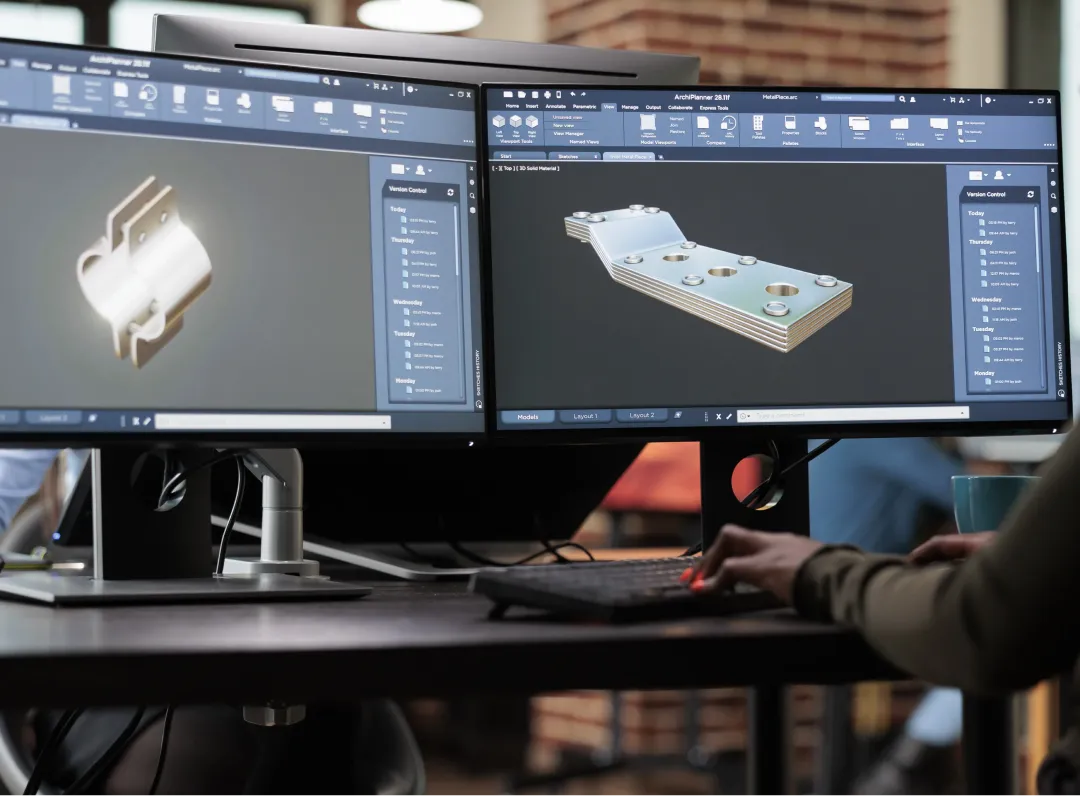CNC Machining
Computer
Numerical Control (CNC) machining is a technology that uses computer-controlled
machines to create parts and products from various materials. CNC stands for computer
numerical control, which means that the machines follow a set of instructions or code that
tells them how to move and cut the material. CNC machining can produce parts and products
with high accuracy, speed, flexibility, and quality, making it a superior method to
traditional machining methods. In this article, we will explain how CNC machining works,
what are its advantages, and how Vexma Technologies can help you with your CNC machining
needs.
How CNC Machining Works
CNC machining involves four main steps: Designing, Programming, Setting up, and
Machining. Here is a brief overview of each step:
Designing
The first step is to design the part or product using a CAD
(Computer-Aided Design) software, which creates a digital model of the
part or product. The CAD software allows you to create and modify the
shape, size, and features of the part or product, as well as simulate
its functionality and performance.
Programming
The next step is to convert the CAD model into a set of instructions or
code that the CNC machine can understand and follow. This is done using
a CAM (Computer-Aided Manufacturing) software, which generates a G-code
or M-code file that contains the coordinates, speed, and direction of
the tool movement. The CAM software also optimizes the tool path and the
machining parameters, such as feed rate, spindle speed, and depth of
cut, to ensure the best results.
Setting up
The third step is to prepare the CNC machine and the workpiece for the
machining process. This involves selecting and installing the
appropriate machine tools, such as drills, mills, lathes, or grinders,
and securing the workpiece on the machine table or chuck. The machine
tools can have 3, 4, or 5 axes, which allow them to move in different
directions and angles. The machine tools are also equipped with sensors
and controllers that monitor and adjust the machining process.
Machining
The final step is to start the CNC machine and execute the program. The
CNC machine will follow the instructions and control the machine tools
to cut, shape, and form the workpiece according to the CAD model. The
CNC machine will also monitor the machining process and provide feedback
and adjustments if needed. The machining process can be fully automated
or semi-automated, depending on the complexity and requirements of the
part or product.
| CNC Turning |
CNC Milling |
CNC Drilling |
| 2-axis CNC lathes |
3-, 4- and 5-axis machines |
Upright, bench, radial drill presses |
Advantages of CNC Machining
CNC machining involves four main steps: Designing, Programming, Setting up, and
Machining. Here is a brief overview of each step:
Accuracy
CNC machining can produce parts and products with high precision and
accuracy, which can meet the strict specifications and tolerances
required by various industries and applications. CNC machining can also
ensure the repeatability and consistency of the parts and products,
which can reduce errors and waste.
Speed
CNC machining can reduce the production time and cost by using automated
processes and efficient machines, which can perform multiple operations
in a single setup and run continuously without human intervention. CNC
machining can also increase the productivity and profitability of the
manufacturing process, as well as the customer satisfaction and loyalty.
Flexibility
CNC machining can handle different types of materials, such as metal,
plastic, wood, or composite, and create complex and customized parts and
products that are difficult or impossible to make with manual methods.
CNC machining can also adapt to the changing needs and demands of the
customers, as well as the market trends and innovations.
Quality
CNC machining can ensure the quality and reliability of the parts and
products by using advanced machines, tools, and materials, as well as
quality control and inspection methods. CNC machining can also improve
the performance and functionality of the parts and products, as well as
their appearance and aesthetics.
Technical Specification
| CNC Process |
Tolerance |
| Lathe |
± 0.005" | 0.13mm |
| Router |
± 0.005" | 0.13mm |
| Router (Cutting Gaskets) |
± 0.030" | 0.762mm |
| 3-Axis Milling |
± 0.005" | 0.13mm |
| 5-Axis Milling |
± 0.005" | 0.13mm |
| Engraving |
± 0.005" | 0.13mm |
| Surface Roughness (Finish) |
125RA |
How Vexma Technologies Can Help You with CNC Machining
Vexma Technologies is a leading additive and advanced manufacturing service provider,
offering CNC machining solutions for various applications, such as prototyping, low-volume
production, tooling, and molding. Vexma Technologies has a team of experienced and skilled
engineers and machinists, who can handle any CNC machining project with precision and
efficiency. Vexma Technologies also offers other additive and advanced manufacturing
services, such as 3D printing, vacuum casting, design and analysis, new product development,
and reverse engineering.
Vexma Technologies is committed to delivering high-quality and cost-effective CNC machining
and manufacturing services to its customers, and to making CNC machining accessible and
affordable for everyone.
If you are interested in CNC machining and manufacturing services, you can contact Vexma
Technologies through Our website, email, or phone. You can also request a quote, a sample,
or a consultation from their team of experts. Vexma Technologies will help you turn your
ideas into reality, and to create value and impact with CNC machining.















